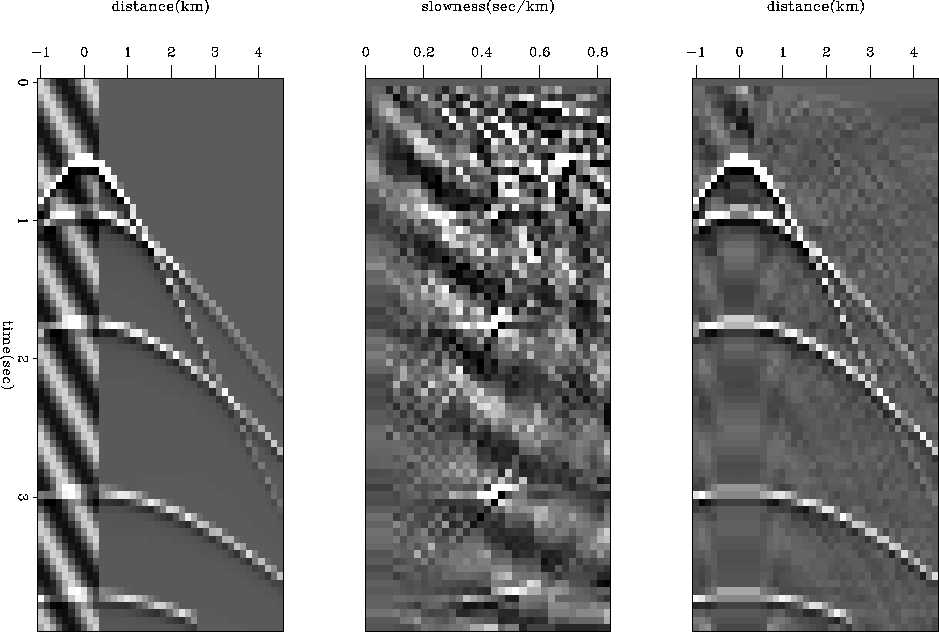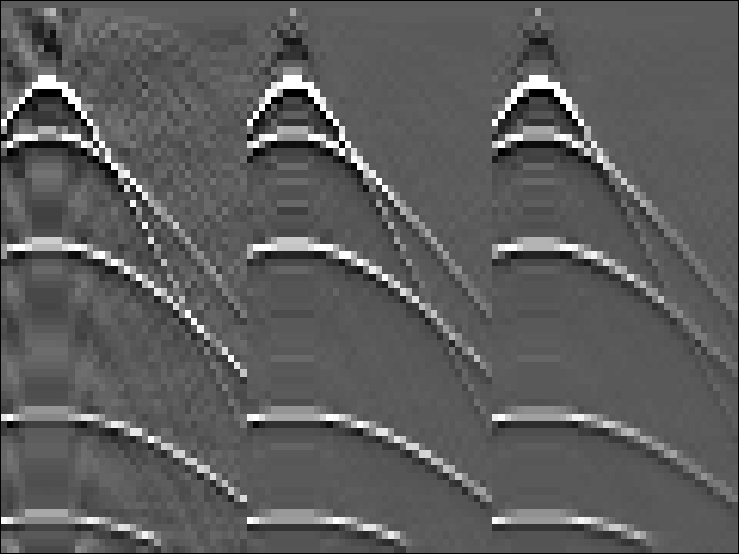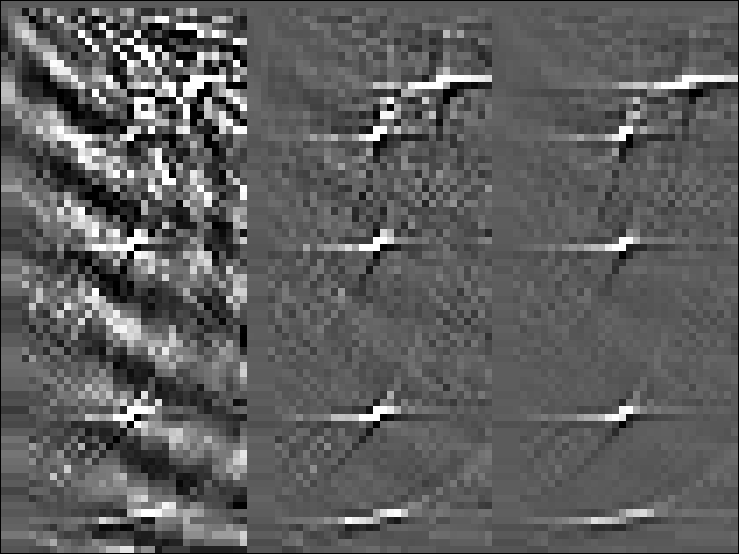




Next: Tests on real data
Up: comparing IRLS and Huber
Previous: Tests on synthetic data:
In this example, we contaminated the data with a low frequency/low velocity linear event that simulates,
to some extent, groundroll (Figure 5, left).
Because the operator A models only hyperbolas, the simulated groundroll introduces some
inconsistent data. It is therefore interesting to test the sensitivity of our inversion schemes (l2 and l1)
for this new problem.
The l2 inversion of the data leads to a fairly noisy model where
the five expected events are difficult to pick (Figure 5). However, without
groundroll and only a few artifacts, the remodeled l2 data does not display so dramatic effects.
With a ``l1'' inversion, the model space is more accurately resolved, as shown in Figure
7.
Again, there are few differences between IRLS and the Huber solver, and it looks like
the ``l1'' norm copes more easily with inconsistent events than l2
(groundroll in this case).
gr-freq30-L2-HUBER
Figure 5 From left to right: 1) Input data. 2) velocity
domain, l2 inversion result. 3) remodeled data from the l2 result




 comp-data-freq30
comp-data-freq30
Figure 6 From left to right: 1) Remodeled data with l2.
2) Remodeled data with the Huber solver. 3) Remodeled data using IRLS




 comp-mod-freq30
comp-mod-freq30
Figure 7 From left to right: 1) l2 velocity space.
2) Huber velocity space. 3) IRLS velocity space










Next: Tests on real data
Up: comparing IRLS and Huber
Previous: Tests on synthetic data:
Stanford Exploration Project
4/27/2000



